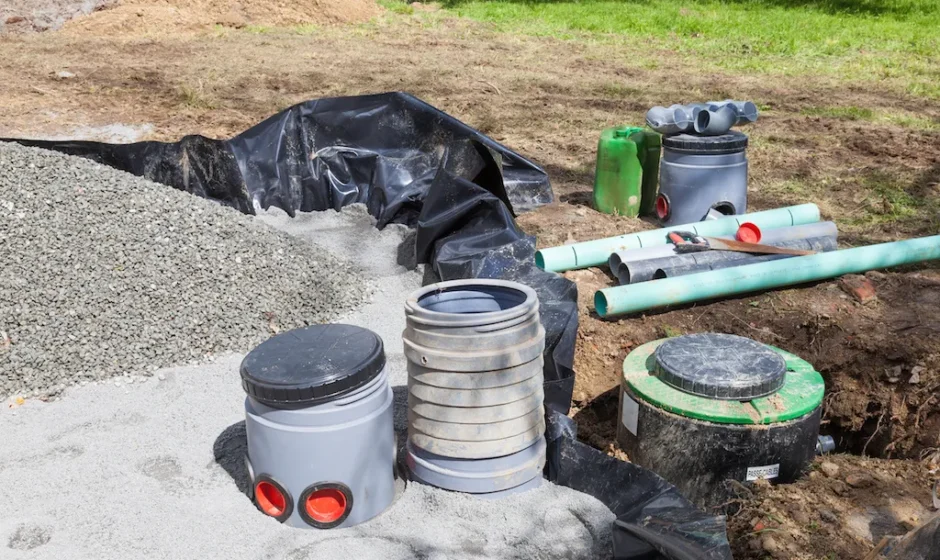Septic tank pumping is a crucial aspect of septic system maintenance, ensuring the efficient and reliable treatment of wastewater in homes and properties without access to municipal sewage services. While many homeowners understand the importance of pumping their septic tanks regularly, few may be familiar with the science behind the process. In this article, we will take a deep dive into the science of septic tank pumping, exploring the mechanics, principles, and environmental considerations that make it an essential part of septic system care.
Understanding the Septic System
Before delving into the science of septic tank pumping, it’s essential to understand the basics of a septic system. A septic system consists of three main components:
- Septic Tank: The septic tank is a buried, watertight container that collects and temporarily holds wastewater from your home. Inside the tank, solids settle to the bottom, forming a layer of sludge, while lighter materials, such as grease, float to the top, creating a scum layer.
- Drainfield: After wastewater leaves the septic tank, it flows into the drainfield, also known as the leach field. The drainfield consists of perforated pipes or chambers buried in soil. The effluent (liquid) from the septic tank is distributed into the drainfield and undergoes further treatment as it percolates through the soil.
- Soil: Soil in the drainfield acts as a natural filter and treatment medium. It helps remove impurities and pathogens from the effluent, allowing it to safely return to the groundwater.
The Importance of Septic Tank Pumping
Over time, the accumulation of solids and sludge in the septic tank can lead to various issues:
- Clogs and Blockages: Excess solids can clog pipes and drainfield, leading to slow drains, backups, and system failures.
- Reduced Efficiency: As the sludge layer thickens, the effective capacity of your septic tank decreases, requiring more frequent pumping.
- System Failure: Neglecting septic tank pumping can result in system failures, costly repairs, or even complete replacement.
- Environmental Impact: Untreated sewage leaking from an overfull septic tank can contaminate groundwater and harm the environment.
The Science Behind Septic Tank Pumping
Now, let’s explore the science of septic tank pumping, starting with the key components of the process:
Sludge and Scum Layers:
-
- Inside the septic tank, solid waste materials settle at the bottom, forming the sludge layer, while lighter materials like grease float to the top, creating the scum layer. The effluent (liquid) between these layers contains dissolved and suspended organic matter.
Bacterial Activity:
-
- Bacteria play a crucial role in the septic tank’s operation. Anaerobic bacteria thrive in the oxygen-depleted environment of the tank and work to break down the organic matter present in the effluent.
Gravity Separation:
-
- The principle of gravity separation is central to the septic tank’s function. Heavier solids settle to the bottom (sludge layer), while lighter solids float to the top (scum layer). This separation process occurs naturally within the tank.
Effluent Clarification:
-
- As wastewater enters the septic tank, it undergoes a process of clarification. Particles in the effluent settle out due to gravitational forces, helping to clarify the liquid portion.
The Septic Tank Pumping Process
When it’s time to pump the septic tank, a licensed professional employs a specific process that takes into account the science behind the septic system:
Inspection:
-
- Before pumping begins, the professional inspects the septic tank and access points. This inspection helps assess the condition of the tank, baffles, and other components.
Pumping:
-
- The actual pumping process involves using a specialized vacuum truck to remove the contents of the septic tank. The process typically begins with the removal of the scum layer, followed by the sludge layer and clarified effluent.
Waste Removal:
-
- The collected waste is transported to a licensed treatment facility for processing and disposal. This step is crucial for responsible waste management.
Inspection of Baffles and Components:
-
- During pumping, professionals often inspect the inlet and outlet baffles within the septic tank. Damaged or missing baffles can affect the tank’s performance.
Effluent Assessment:
-
- Professionals may also assess the quality of the effluent during pumping. It should appear clear and free of debris. Any issues with the effluent may be indicative of problems within the tank.
Tank Cleaning (Optional):
-
- In some cases, professionals may clean the interior of the septic tank to remove any residual solids or buildup. This step is not always necessary but can be beneficial in certain situations.
Environmental Considerations
The science of septic tank pumping extends to environmental considerations, as responsible waste management is a critical aspect of the process:
Waste Treatment:
-
- The waste collected during pumping is transported to licensed treatment facilities, where it undergoes proper processing and disposal. This ensures that septic waste is treated in an environmentally responsible manner.
Preventing Contamination:
-
- Professionals take precautions to prevent spills and contamination during pumping. This includes sealing access points and using equipment designed to minimize environmental impact.
Protecting Groundwater:
-
- Proper septic tank pumping helps prevent untreated sewage from leaking into the groundwater, protecting this vital resource and the surrounding environment.
Conclusion
The science of septic tank pumping involves a thorough understanding of the septic system’s components and processes. Regular pumping, performed by licensed professionals, is essential for maintaining the health and efficiency of your septic system. By adhering to the principles of gravity separation, bacterial activity, and responsible waste management, septic tank pumping ensures that your system operates smoothly and prevents environmental contamination. Understanding the science behind septic tank pumping empowers homeowners to make informed decisions about their septic system maintenance and care.



